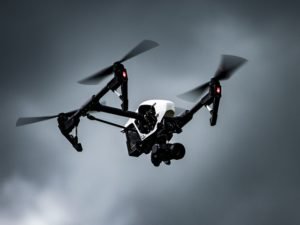News and Commentary.
The comment period has closed on the FAA’s Advanced Notice of Proposed Rulemaking (ANPRM) on the Safe and Secure Operations of Small UAS, and the Notice of Proposed Rulemaking (NPRM) on the Operation of Small Unmanned Aircraft Systems over people. Major manufacturers, community-based organizations, and industry associations have issued their comments and thoughts on the proposals (the text of the proposals may be found here.)
Recently, I received a copy of submitted comments from the Commercial Drone Alliance (CDA), an advocacy group for the commercial drone industry, led by executive directors Lisa Ellman and Gretchen West of international law firm Hogan Lovells.
While all of the commentary that I’ve reviewed to date has merit, the CDA comments clearly express a major flaw in many commercial drone regulations. This flaw in U.S. regulations is, in my opinion, one of the major threats to the U.S. drone industry – and what may leave us behind trailing other countries or losing jobs to overseas firms.
When commenting directly on the Notice of Proposed Rulemaking regarding the operation of small unmanned aircraft systems (“UAS”) over people (“the NPRM”):
“The NPRM fails to properly weigh risks against benefits,” says the CDA comments (emphasis mine.)
CDA comments are consistently well written and well thought out – and as an advocacy group for commercial drone business, they invariably point out issues that threaten the growth of the industry.
An approach which is strictly one-sided – that looks only at the risks and not at the life-saving benefits of technology – limits innovation.
I’ve often found parallels between the development of automobile laws and the development of drone laws. 100 years ago, the speed limit for cars was 4 miles an hour – and drivers had to have a runner waving a red flag go in front of the car in order to warn any people and animals in the vicinity. Such limitations not only were onerous for drivers, they essentially eliminated many of the benefits of a vehicle that could travel significantly faster than any previous invention. Limited not so much by technology as by what regulations allow, the drone industry can sometimes find itself in a similar situation.
A second CDA comment, this one about the Safe and Secure Operations of Small UAS ANPRM, points out another critical point in regulation:
“Any additional UAS rulemaking must not unduly burden the nascent commercial UAS industry with unreasonable, onerous, unworkable or impractical regulations that lack any reasonable, demonstrable countervailing safety or security justification.” (Emphasis mine.)
While the goal may be absolute transparency about all air traffic and absolute safety for property and people, those goals must be balanced with realistic processes if regulations are not to leave the U.S. drone industry behind our global partners and competitors.
The drone industry has much to offer communities. Commercial applications could offer benefits that range from improved infrastructure, more reliable power delivery, life saving applications in medicine and emergency services, disaster management, and communications to simple delivery of products to rural areas. There are thousands of ways that drones are providing documented value to families and businesses in the U.S.
Let’s hope that drone regulations allow the industry to pursue those applications – and to show communities and law makers that the benefits of drone technology far outweigh the risks.
Below are the CDA comments:
As it relates to the FAA’s advance notice of proposed rulemaking regarding the safe and secure operations of small UAS, the CDA believes:
- The federal government should work expeditiously to further integrate UAS into the NAS safely and securely. We appreciate the continued work of the White House, Department of Transportation, FAA, and the national security agencies to do so.
- Any additional UAS rulemaking must not unduly burden the nascent commercial UAS industry with unreasonable, onerous, unworkable or impractical regulations that lack any reasonable, demonstrable countervailing safety or security justification.
a) The pending Notice of Proposed Rulemaking (“NPRM”) on operations over people is at odds with this fundamental principle in several critical respects.
- The FAA should expeditiously publish an NPRM related to the designation of fixed site facilities and move swiftly to finalize the corresponding regulations.
- A comprehensive remote UAS identification system is essential to establishing reasonable controls to protect against potential safety and security threats posed by UAS. Since remote ID rulemaking is a gating item for any rules enabling expanded operations, the FAA should move expeditiously to publish an NPRM on remote ID of UAS.
- While they are generally supportive of expanding counter-UAS authorities to certain state and local law enforcement entities, they also believe that any counter-UAS legislation must not interfere with lawful commercial UAS operations or otherwise handicap the commercial UAS industry.
The CDA also provided the following comments surrounding the Notice of Proposed Rulemaking regarding the operation of small unmanned aircraft systems (“UAS”) over people (“the NPRM”).
- The prohibition on flights over people in moving vehicles must be eliminated.
- The NPRM’s risk analysis for operations over people is flawed. It should take into account the likelihood or probability of a UA actually hitting a person or causing an injury.
- The NPRM’s kinetic energy impact standards lack justification and are too low.
- The singular focus of the NPRM’s pre-accepted means of compliance on kinetic energy disincentivizes advancements in UAS technology that would otherwise enhance safety.
- The NPRM fails to properly weigh risks against benefits.
- The NPRM does not broadly permit more expanded operations for sophisticated operators.
- The NPRM does not expand the definition of “direct participant”.
The CDA urges the FAA to address these concerns in any final rule.
Miriam McNabb is the Editor-in-Chief of DRONELIFE and CEO of JobForDrones, a professional drone services marketplace, and a fascinated observer of the emerging drone industry and the regulatory environment for drones. Miriam has a degree from the University of Chicago and over 20 years of experience in high tech sales and marketing for new technologies.
Email Miriam
TWITTER:@spaldingbarker
Subscribe to DroneLife here.
https://dronelife.com/2019/04/19/commercial-drone-alliance-points-out-the-major-flaw-in-faa-proposals/
 Unmanned Aerial Vehicle The latest drone news
Unmanned Aerial Vehicle The latest drone news





